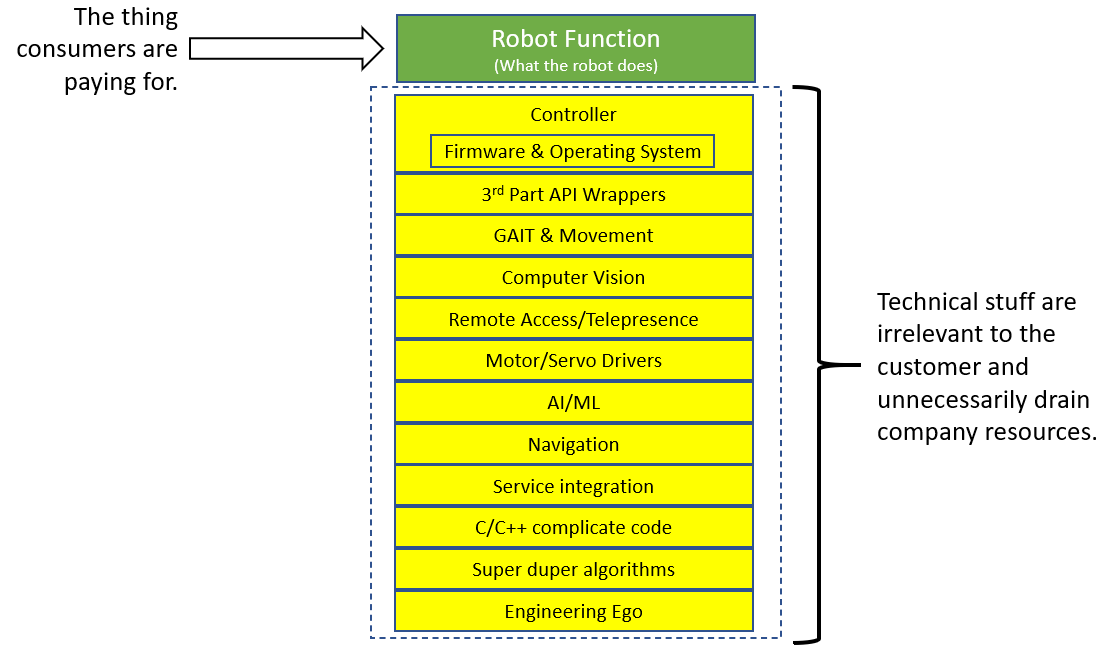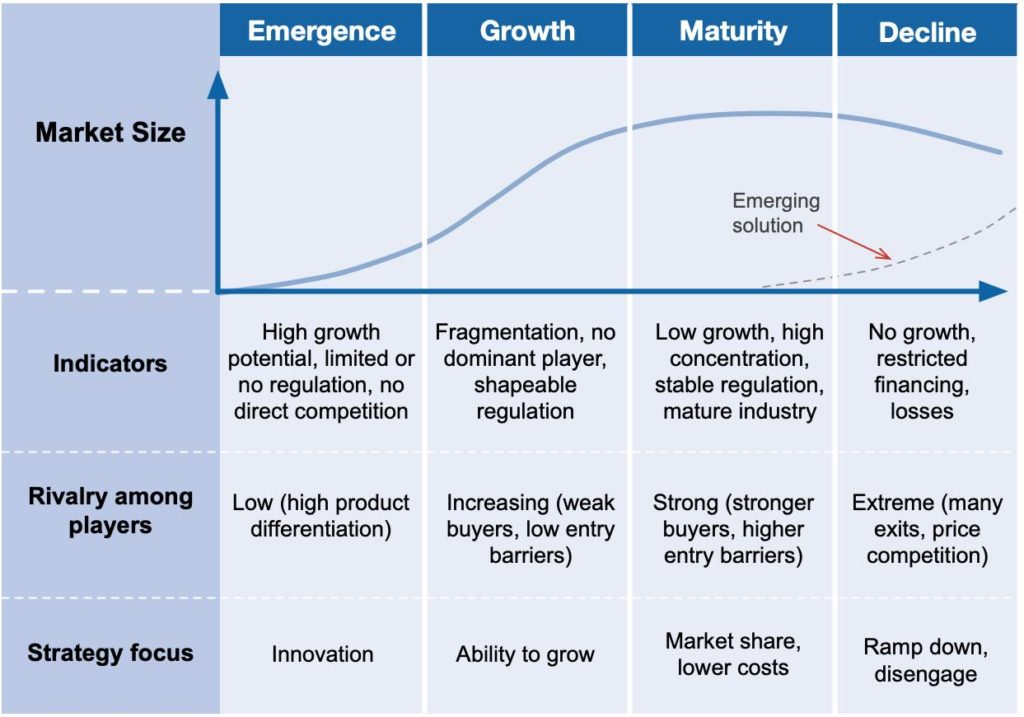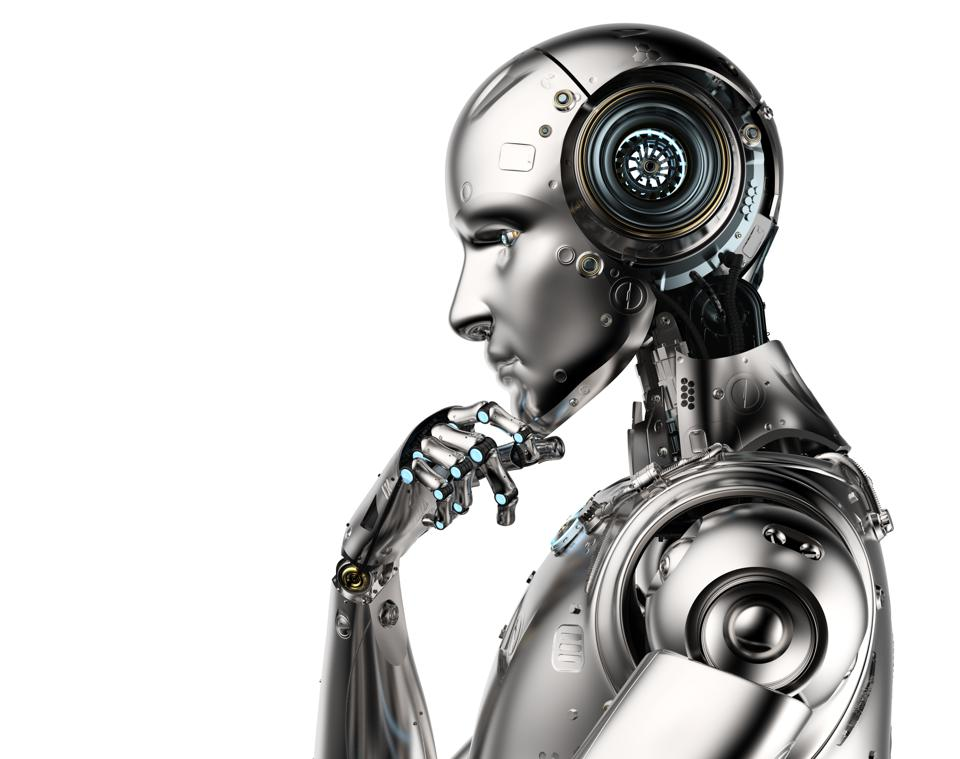
RIP: Anki, Jibo, Baxter, Mayfield, etc...
History foretells the fate of robot companies that attempt the burden of building and sustaining "the full-stack." Similar outcomes have affected companies from all industries where the founding partners were engineers. Today, we begin to ponder the question of where are the robots? Most importantly, why have so many robot companies failed, and what can we do to help robot companies succeed?

Perhaps the noise from social media, politics, and the current Covid-19 situation has caused startups and the investment community to forget a vital part of the industry life cycle stages. Organizations might have also overlooked this because it has also been several years since a new industry has emerged. Even the last few personal-computer sub-industries of mobile devices/apps, VR/AR, etc., have inherited sectors from existing mature and proven industries.

Robotics is a unique industry, albeit not too different from the personal-computer evolution, where multiple disciplines united to form a consumer product. The Personal Computer took many decades to influence and support sub-industries of software, hardware peripherals, and a wide range of use cases. Today, a computing device is user-friendly and esthetically pleasing, and the complex engineering disciplines are well hidden (CPU, operating system, drivers, power management, etc.). Readers may recall early personal-computer diagrams that included input, output, processing, and storage devices. Even earlier than the 1980's personal-computer, a computer consisted of even more complicated engineering disciplines that seemed impossible to scale to what we have today. Today, a computing device is common-place, and the components that make up computing devices are not taught in school as they once were.
The Revolution of Robot Platforms
Today, a child can operate a computing device before knowing how to speak. This results from a mature industry in which every contributor plays their strength by focusing on what they do best when contributing to product development. For example, some profitable companies make integrated circuits with a single function of performing mathematical floating-point calculations incredibly fast; because that is their strength. Another company will manufacturer a button or connector because that is their strength. Again, another produces batteries because it is their strength. The distribution of these disciplines in computing is how organizations can build platforms like Unity, Android, and Wix. Creative entrepreneurs use these platforms to make products that seamlessly integrate with our lives as tools and entertainment. What will it take for the robotics industry to distribute disciplines across specialists and enable creative entrepreneurs to make robot products rather than engineers? Imagine the impact that robot products made by creative entrepreneurs would have on our lives!
So, Where Is My Robot?
 This is the first blog entry in a series titled "Where Is My Robot?". We will cover the robot industry failures, strengths, and areas of improvement needed to fulfill consumer and financial potential. We will reflect on the fallen venture-backed giants that attempted to skip the industry life-cycle steps, such as Baxter, Anki, Jibo, Mayfield, Romo, and many others.
This is the first blog entry in a series titled "Where Is My Robot?". We will cover the robot industry failures, strengths, and areas of improvement needed to fulfill consumer and financial potential. We will reflect on the fallen venture-backed giants that attempted to skip the industry life-cycle steps, such as Baxter, Anki, Jibo, Mayfield, Romo, and many others.
We will examine organizations that repeat Synthiam's message that "too many robot companies focus on the robot and not the business"; however, these same organizations build complex solutions targeted at engineers instead of creative entrepreneurs. In this article by TechCrunch, hardware manufacturers use Synthiam's message that "making robots should be easy" while contrarily designing products targeted at engineers.
In this "Where Is My Robot?" series, other subjects we will discuss are operating system choices that support rapid prototyping for creative entrepreneurs. Most importantly, how using Linux for r&d increases the barrier of entry, adds unneeded operational complexities, and limits productive creativity.
Provide feedback in the comments of topics in this area you would like to see covered. See you in the next blog entry - stay tuned!

The loudest battlefield robots ever made... Again, to the point that Boston Dynamics was on a failing trajectory since its first conception.
Especially when they were gas powered.
Oh wow seriously - you're right about that one. All these videos have the robots in silence or with some foreground music.
I feel Boston Dynamics is what you get when a bunch of money is thrown at a room full of engineers with no absolutely no plan LOL
LOL the boxes are clearly empty! The sound is hilarious - it's so muffled to make the viewer believe it's quiet. Wow, can you imagine those poor humans having to work next to this thing? Deafening I'm sure.
Completely empty boxes and I do feel as though they have adjusted the audio.
I do see a big market for summer time agriculture robots. Where my cottage is, there are huge farms all around depending on using the Mexican labor force,who work great in high heat and never complain. I guess they are flown in on annual contracts ,work fairly cheap. I bet robots could do similar work in farming. Or I do see robot Lawn mowers getting big in summer, I want to build my own mower bot instead of buying the expensive ones. We actually have a self propelling mower at the cottage, could be made into full robot control.
Hi, just a thought on a useful consumer robot. What about small roombas for walls. They won't clean but they could paint. People could take their painting and stuff down and walls could be painted overnight. Imagine one color on Tue and another on thurs. Place a painting wall clinger up and come back to a different color. Also, looking for a window washer robot that \can roomba my windows, inside and out.
That would be cool yea. I do beleive a window washer robot already exist, but is used on large office buildings right now, mase bu Irobot I think.